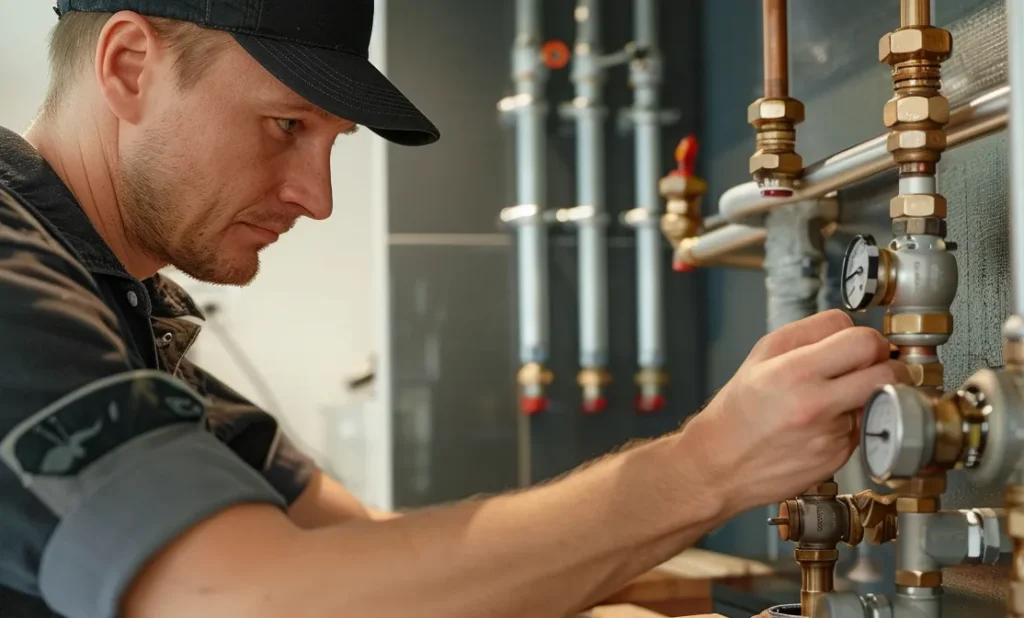Bathrooms are unique environments—tight spaces, high humidity, and a mix of pipe materials (copper, PEX, CPVC, even stainless steel in some luxury builds).
Today, I want to talk about something that genuinely transformed how I fixture hookups: crimping tools. Seriously, making the switch felt like upgrading from a hand drill to a high-torque impact driver. It wasn’t just different; it was better – faster, cleaner, more reliable. And because my company lives and breathes professional installation tools (like the pipe tools and hydraulic solutions we supply), I get to see firsthand how the right gear makes all the difference for pros like you.
Why Tool Quality MATTERS (This Isn’t the Place to Cheap Out!)
Look, I get it. Tools are an investment. But skimping on your crimper is like buying a dull saw – it just makes your job harder and the results worse. Here’s what you need in a professional-grade crimping tool, the kind we stand behind:
Precise, Consistent Crimps: Every single crimp must be perfect. A cheap tool can under-crimp (leak!) or over-crimp (crack the fitting!). Our tools deliver calibrated force every time.
Durability: Jobsite tools get dropped, banged, and used hard. They need solid construction (think forged steel, robust hydraulics).
Ergonomics: You’re using this tool hundreds of times a day. Comfort matters. Good balance, comfortable grips, and smooth operation reduce fatigue.
Calibration & Go/No-Go Gauges: Essential! You MUST check your tool’s crimp diameter regularly with the supplied gauge to ensure it’s within spec. This is non-negotiable for reliable, leak-free joints. We ensure our tools come with these and support recalibration.
Manual vs. Hydraulic Crimpers: What’s Your Style?
| Feature | Manual Ratcheting Crimpers | Hydraulic Crimpers | Why It Matters (Especially in Bathrooms!) |
|---|---|---|---|
| Force | User-applied (ratcheting mechanism) | Hydraulic pump generates high force | Hydraulic excels with larger fittings (3/4″, 1″) or high-volume work, less user fatigue. |
| Speed | Fast per connection | Very fast per connection | Both are fast, hydraulic edges out in sheer volume. Crucial for big projects. |
| Effort | Moderate hand/arm strength required | Minimal hand effort (pump does the work) | Hydraulic is a game-changer for reducing fatigue, especially overhead or in awkward positions. |
| Size/Weight | Generally more compact and lighter | Larger tool head, requires separate pump unit | Manual wins in super tight confines where space is ultra-limited. |
| Cost | Lower initial investment | Higher initial investment | Manual is great for starters or smaller shops; hydraulic ROI comes with volume. |
| Best For | Most 3/8″, 1/2″ work; tight access; budget-conscious | High-volume jobs; larger fittings (3/4″, 1″); reducing fatigue | Bathrooms often need compact (manual) for fixtures, but hydraulic speed saves days on large condo/hotel jobs. |
Your Crimping FAQ Answered (From One Pro to Another)
Q: Isn’t PEX crimping expensive to get into? A: There’s an initial cost for the tool and jaws, but the time savings on every single job quickly offset it. Fewer callbacks from leaks save even more. Plus, PEX tubing itself is often cheaper than copper. Think long-term investment, not just upfront cost.
Q: Are crimp connections really as reliable as soldered copper? A: When done correctly with quality tools and components? Absolutely, and often more forgiving. They handle freeze events better and aren’t susceptible to corrosion like copper can be. The key is using calibrated tools and checking every crimp with the go/no-go gauge!
Q: What about the different types of rings (Copper vs. Stainless Steel vs. PEX-A Expansion)? A: We’re focusing on crimp systems (PEX-B/PEX-C mainly using copper or SS rings). Copper rings are common and cost-effective. Stainless Steel (SS) rings offer superior corrosion resistance, especially important if you’re in an area with aggressive water or near the coast. Expansion (PEX-A) is a different system requiring a different tool. For crimping, both copper and SS rings work great when used with the correct crimp jaws. Ensure your tool matches the ring type!
Q: Do I need a different tool for every fitting size? A: Nope! That’s the beauty. You buy one crimper body and then interchangeable jaw sets (e.g., for 3/8″, 1/2″, 3/4″). Much more cost-effective than multiple dedicated tools.
Q: Can I use crimping on existing copper pipes? A: Not directly. You’d use a transition fitting (like copper x PEX) which you can crimp to the PEX side, while the copper side usually requires soldering or a compression transition.
Ready to Ditch the Hassle?
We live and breathe these tools. We source and supply the robust, reliable manual crimpers and the time-saving, fatigue-reducing hydraulic crimping systems precisely because we know the difference they make for professional plumbers, contractors, and installers like you. We also offer support.
Don’t just take my word for it. Think about the last tricky bathroom connection that slowed you down. Imagine knocking it out in seconds, leak-free, without breaking a sweat. That’s the crimping advantage.


